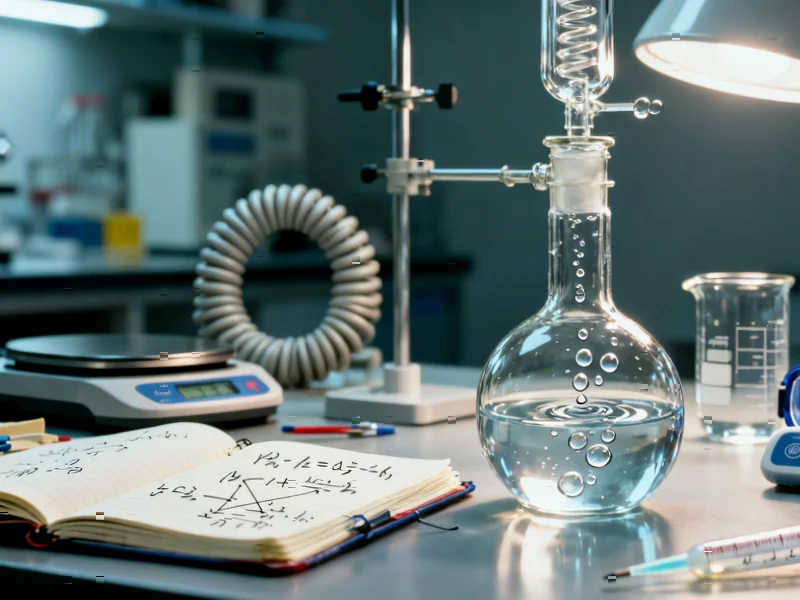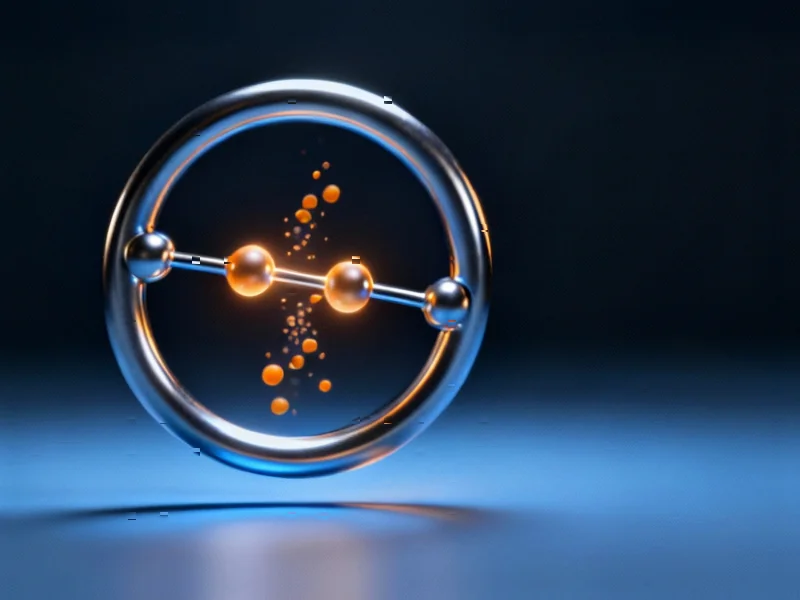According to Phys.org, researchers at the Indian Institute of Science have developed a highly efficient cell-free enzyme system that converts fatty acids into valuable 1-alkenes, achieving a remarkable 262-fold increase in catalytic performance and near-complete substrate conversion with up to 98% yield. The team, led by corresponding author Debasis Das, leveraged a bacterial enzyme called UndB and improved its performance through enzyme engineering, co-substrate recycling, and molecular simulation-guided redesign, overcoming previous limitations of whole-cell systems that required expensive cofactors and struggled with enzyme toxicity. By creating a self-sustaining cell-free system that breaks apart E. coli cells to extract the UndB-containing membrane fraction, researchers achieved drastic reduction in cofactor consumption while operating under mild ambient temperature and neutral pH conditions. The technology has been granted a patent, and the team is now exploring industrial collaborations for large-scale production of these versatile hydrocarbons that can serve as drop-in biofuels, polymer feedstocks, or pharmaceutical precursors. This breakthrough represents a significant advancement in sustainable chemical production.
Table of Contents
The Cell-Free Revolution in Biocatalysis
What makes this development particularly significant is how it represents a broader shift in industrial biotechnology toward cell-free systems. Traditional whole-cell biocatalysis has dominated industrial enzyme applications for decades, but it comes with inherent limitations – cellular maintenance requirements, metabolic competition, and toxicity concerns often constrain productivity. The IISc team’s approach demonstrates the power of decoupling enzymatic reactions from living cells, allowing for unprecedented control over reaction conditions and enzyme concentrations. This isn’t just an incremental improvement; the 262-fold increase in turnover number represents orders-of-magnitude advancement that could make biocatalytic hydrocarbon production economically viable where previous approaches failed. The ability to operate at ambient temperature and neutral pH without generating toxic byproducts means this process could be implemented with relatively simple infrastructure compared to traditional chemical synthesis methods.
Beyond Petrochemical Dependence
The implications for reducing our reliance on petrochemical feedstocks are substantial. Hydrocarbons like 1-alkenes are fundamental building blocks across multiple industries – from plastics and polymers to lubricants and pharmaceuticals. Currently, most industrial-scale alkene production involves energy-intensive processes using petroleum-derived feedstocks. The ability to produce these same molecules from inexpensive fatty acids, particularly from waste streams like used cooking oils or agricultural byproducts, creates a circular economy opportunity that could transform multiple supply chains. What’s particularly clever about this approach is that it leverages nature’s own catalytic machinery – the enzymes have evolved over millions of years to perform these transformations efficiently – while overcoming biological constraints through engineering.
The Computational Design Advantage
The team’s use of molecular dynamics simulations to understand and redesign enzyme specificity represents a growing trend in biotechnology that’s accelerating innovation. By computationally modeling how subtle structural changes affect the enzyme’s tunnel cavity, researchers could rationally engineer variants that accommodate longer-chain fatty acids without the traditional trial-and-error approach. This computational-guided enzyme engineering is becoming increasingly sophisticated, allowing researchers to make targeted modifications that would be difficult to discover through random mutagenesis alone. The finding that replacing a helical region far from the catalytic site could dramatically alter substrate specificity underscores how allosteric effects in enzymes can be harnessed for industrial applications.
Scaling Challenges and Economic Realities
While the laboratory results are impressive, the path to commercial implementation faces several hurdles. Scaling cell-free systems to industrial volumes presents engineering challenges – maintaining enzyme stability, managing reaction kinetics, and developing efficient separation processes for product recovery. The economics of cofactor regeneration, even with the reported improvements, will need to be validated at scale. Additionally, sourcing consistent fatty acid feedstocks of appropriate quality and composition could present supply chain challenges. The researchers mention exploring industrial collaborations, which suggests they recognize that moving from laboratory breakthrough to commercial technology requires expertise in process engineering and scale-up that often lies outside academic institutions.
Broader Industry Implications
This technology arrives at a pivotal moment for the chemical industry, which faces increasing pressure to decarbonize and develop sustainable alternatives to petroleum-based processes. The ability to produce drop-in replacements for existing chemical feedstocks using biological routes could significantly lower the carbon footprint of numerous products. For the biofuels sector, particularly aviation and marine fuels where electrification faces technical barriers, sustainable hydrocarbon production from waste streams offers a promising pathway. The pharmaceutical industry could benefit from accessing specific alkene isomers that are difficult to synthesize through conventional chemistry. As described in their published research, the team’s focus on understanding the fundamental chemistry of these metalloenzymes suggests they’re building a platform technology that could be adapted for producing various hydrocarbon products beyond the specific examples demonstrated.
Future Outlook and Development Trajectory
The patent protection and pursuit of industrial partnerships indicate this technology is moving toward commercialization, but realistic timelines suggest we’re still several years from seeing industrial-scale implementation. The next critical steps will involve demonstrating the process at pilot scale, optimizing for different feedstock compositions, and conducting thorough techno-economic analysis and life cycle assessment. Given the modular nature of cell-free systems, we can expect to see continued optimization of individual components – further enzyme engineering, improved cofactor recycling systems, and integration with downstream processing. If successfully commercialized, this approach could establish a new paradigm for chemical production that combines the specificity and efficiency of biological catalysts with the controllability and scalability of traditional chemical processes.




2ttt82